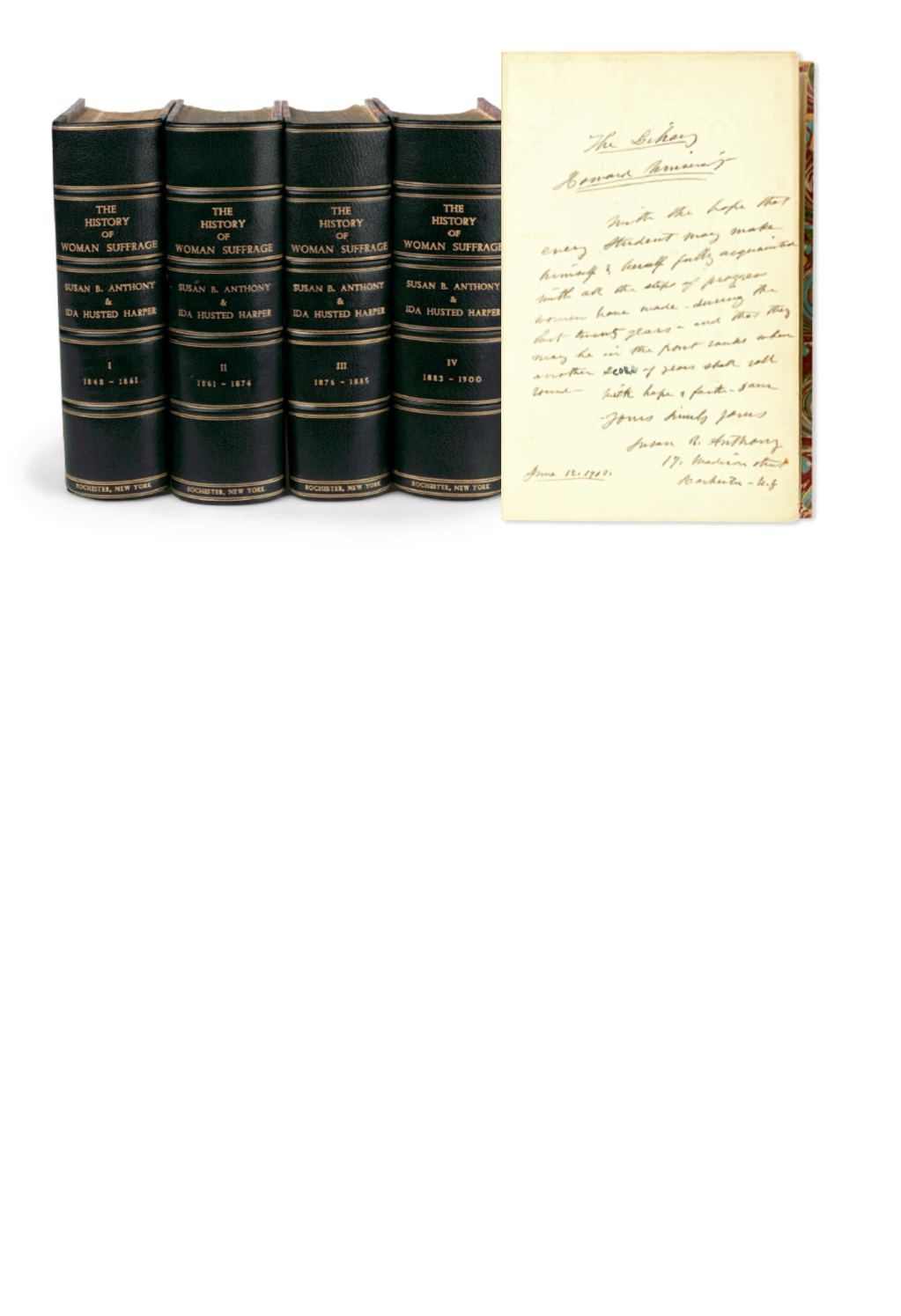

A SUPERB ASSOCIATION
195
●
(CIVIL RIGHTS.) ANTHONY, SUSAN B.
The History of Women
Suffrage.
Engraved portraits with tissue guards. 878, 952, 1013, 1144 pages. 4 volumes,
uniform tall, thick Royal 8vo’s. Recently bound in period style quarter black morocco and
marbled paper-covered boards; spines gilt with five raised bands; institutional stamps on the
page-edges.
INSCRIBED BY SUSAN B
.
ANTHONY TO HOWARD UNIVERSITY IN THE FINAL
THREE VOLUMES
.
Due to the acidic nature of the paper these volumes were printed on, the pages on
which the presentations appear as well as the title pages have been backed with archival paper; a cou-
ple of pages have been re-margined. Aside from the stamps on the edges, there are no library markings
to speak of.
New York, 1881, 1882, 1887, (1902)
[7,500/10,000]
FIRST EDITIONS
,
INSCRIBED IN THE FINAL
3
VOLUMES BY SUSAN B
.
ANTHONY
:
Volume II
“Howard University with kind regards of Susan B. Anthony, Riis House, Washington D.C., March
4, 1887,” volume III “To the Howard University with best wishes of Susan B. Anthony, the Riis
House, Washington D.C. 4/87,” and with a full page presentation in volume IV “The Library
Howard University. With the hope that every student may make himself or herself fully acquainted
with all the steps of progress women have made during the last twenty years—and that they may be
in the first ranks when another score of years shall roll ‘round, with hope and faith, I am yours kindly,
Susan B. Anthony, 17 Madison Street, Rochester, N.Y, June 12, 1900.”
Susan B. Anthony (1820-1906), champion of women’s rights and the abolition of slavery, began cir-
culating anti-slavery petitions at the age of 17. In 1856, she became the New York state agent for the
American Anti-Slavery Society. Frederick Douglass and Susan B. Anthony had met in 1845, when
Douglass was on his first speaking tour, following publication of his Narrative. And it was at the urg-
ing of Susan B. Anthony and the Post family that Douglass and his wife Anna moved to Rochester
in 1847. The advocates for women’s rights were quite often the same people that were fighting slavery.
Susan B. Anthony, Elizabeth Cady Stanton, and others were brought together by people like
William Lloyd Garrison and the American Anti-Slavery Society. And while some men in the AASS
opposed women in their ranks, this only served to strengthen women’s resolve. In the end, the women’s
rights struggle and that of abolition were simply part of the larger 19th century struggle for universal
human rights. Provenance: Dorothy Porter Wesley to the consignor.









